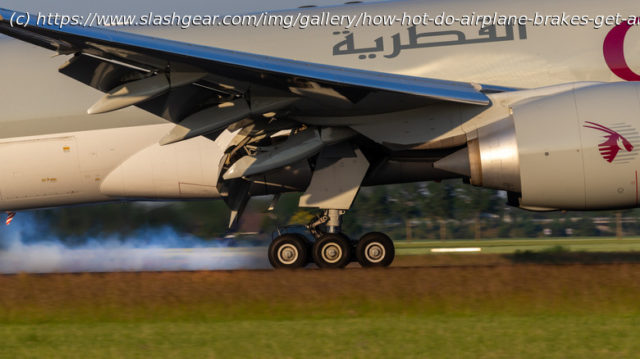Generating the massive amounts of energy to lift an airplane is one feat, but bringing it to a halt is another. How hot do those brakes get and do they fade?
Stopping an airplane is no easy task, and although planes can use spoilers and thrust reversers to assist with the task, the brakes still do around 40% of the work. In simple terms, it’s all about energy. An aircraft’s wheel and brake system converts the kinetic energy of a landing plane to heat energy. In the case of large airliners like the Boeing 777 or Airbus A350, this is a lot of energy to be dissipated. At its most extreme, the Airbus A380 (the largest ever passenger plane) will land at speeds of between 149 mph and 155 mph, and has a maximum landing weight of a mind-boggling 862,007 pounds. That’s a lot of energy to convert into heat, and it all happens incredibly quickly, causing a rapid thermal spike. This can cause the entire brake system to heat up to over 1,800 degrees Fahrenheit.
Managing this heat successfully is absolutely critical. Although modern brake rotors (usually carbon) are designed to withstand such temperatures, an excess of heat still has the potential to cause aircraft tires to explode or ignite any leaking hydraulic fluid. Another consequence of such temperatures is a phenomenon known as brake fade, this happens when brakes overheat, which can result in the brake pads and rotors no longer generating enough friction to adequately decelerate the aircraft. While all this might sound like a recipe for disaster, the engineering of brakes means failures are rare — let’s take a closer look at how aircraft brakes work and safely cope with the demands of stopping a 200-ton aircraft.






